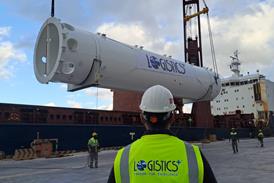November 7 - MAXIKraft Kran und Schwerlastlogistik has helped Enercon GmbH to setup one of its powerful new Enercon E-101 3MW wind turbines in Breidenbach,Germany, using a Terex
The positioning of the rotor on the nacelle quite literally "crowns" the wind turbine construction process. Terex says that in Breidenbach, the lifting operation involved in this manoeuvre required absolute focus from the MAXIKraft team as it raised the 130 tonne turbine, with its rotor diameter of 101 m, to the hub - at a height of 133 m.
In order to prepare the Terex® CC 6800 (pictured below) for this lifting operation, an S1 wind power kit was deployed for the first time in conjunction with this crane model, permitting a standard crane to be converted to a crane specifically intended for deployment in wind turbines. The S1 wind power kit consists of three 12 m heavy load boom sections, which are attached to the boom foot section, thus reinforcing the base of the lattice boom.
Using a SSL/LSL boom combination, the crane achieves a height of 156 m, plus the length of the offset tip with assembly hook. "The definitive advantage offered by such a wind power kit is that our standard crane can be adapted for erecting increasingly tall wind turbines. This concept does not merely increase the crane's practical utility; it also augments long-term cost efficiency for us as operators", explains Steffen Lehmann, dispatcher for the Large Cranes division at MAXIKraft.
Terex says that a practical advantage is the simple assembly of the wind power kit: conversion is no more complex than a conventional mast assembly. The only feature to be noted is the Superlift ballast required during erection: in Breidenbach, this was calculated to weigh in at 450 tonnes owing to the heavy components added.
A Terex installation specialist provided support to the crane service provider during this first-time project implementation.
The Terex® CC 6800 deployed in the project at Breidenbach operated at a radius of 32 m. In order to lift the weight securely, the crane was equipped with 250 tonnes (275.6 tons) of superstructure counterweight, as well as 80 tonnes of central ballast.
















